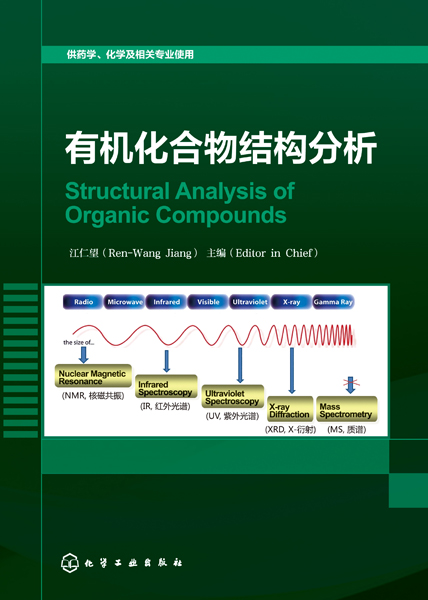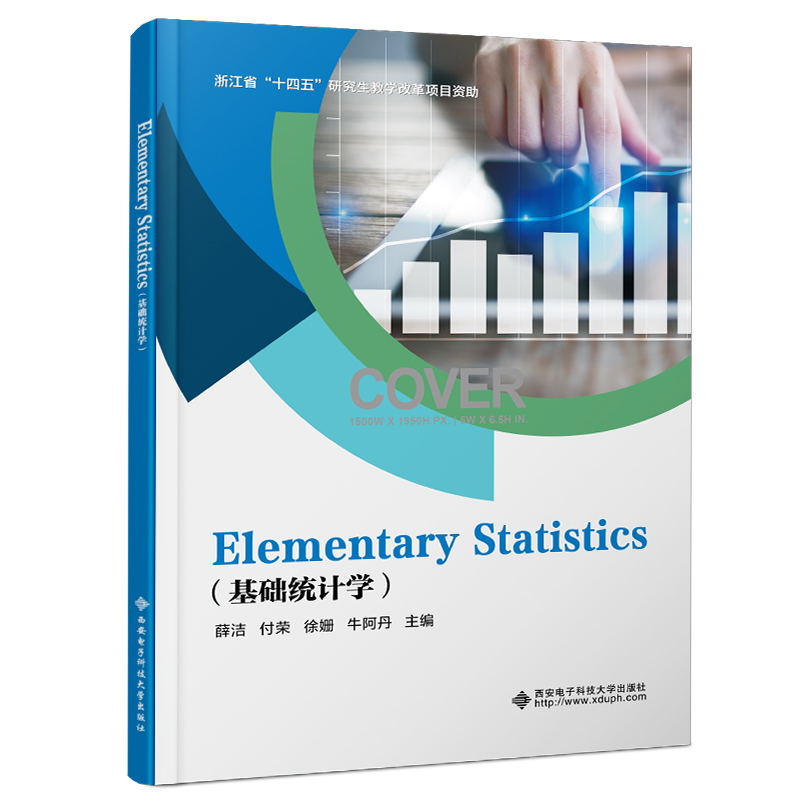- 化学工业出版社
- 9787122437921
- 1版
- 471570
- 48250958-5
- 16开
- 2023-10
- 196
- 152
- 工学
- 机械类
- ①Q811
- 机械类
- 本科
作者简介
目录
Chapter 1 Introduction 1
1.1 Features of English for Special Purposes 1
1.2 Introduction to Bionics 1
1.2.1 Learning from Nature 2
1.2.2 Terms and Definitions 4
1.3 Professional Organizations/Institutions 5
1.3.1 The Key Laboratory of Bionic Engineering (Ministry of Education) of Jilin University (KLBE) 6
1.3.2 The International Society of Bionic Engineering (ISBE) 6
1.3.3 Bionics International (BIN) 7
1.3.4 The Laboratory of Bionics Engineering of the University of Seville (LBE) 8
1.3.5 The Bionics Engineering Lab of the University of Utah (BEL) 8
1.3.6 The Center for Extreme Bionics (CEB) 8
1.3.7 Biomimicry Institute (BI) 9
1.3.8 The Institute of Electrical and Electronics Engineers (IEEE) 9
Key vocabularies 10
Exercises 11
Chapter 2 Fundamentals and Principles of Bionics 13
2.1 Two Strategic Approaches of Bionics 13
2.2 Design Paradigms 15
2.2.1 Problem-Driven BID 16
2.2.2 Solution-Driven BID 19
2.2.3 Biomimicry 23
Key vocabularies 25
Exercises 27
Chapter 3 Enhance the Success of Biomimetic Programs 29
3.1 Biomimetic Approaches to Engineering Designs May be Suboptimal 30
3.2 Cases of Evaluation of Bionic Design 30
3.2.1 Designing Reversible Adhesives Based on Gecko Toe Pads 30
3.2.2 Development of High Performance Materials Based on Spider Dragline Silk 34
3.2.3 Worms Show Way to Efficiently Move Soil 37
3.3 Pathway to Enhanced Outcomes 39
3.3.1 Specification of the Target Function(s) 39
3.3.2 Choice of Model 40
3.3.3 Extraction of Working Principles 40
3.3.4 Designing Prototypes 42
3.3.5 Testing Prototypes 42
Key vocabularies 42
Exercises 44
Chapter 4 Biomimetics of Motion 47
4.1 Biomimics for Adaptivity 47
4.1.1 Micro and Macro 47
4.1.2 Adaptivity through Disassembly 48
4.1.3 Adaptivity through Motion 49
4.2 Motion versus Change 49
4.2.1 Motion as Change on a Specific Time-scale 49
4.2.2 Tropic and Nastic Movements 50
4.2.3 Locomotion 51
4.3 Case Studies of Motion in Nature 53
4.3.1 Plants and Seeds 53
4.3.2 Soft-Bodied Systems 60
4.3.3 Rigid Systems 67
Key vocabularies 73
Exercises 78
Chapter 5 Bioinspired Materials 81
5.1 Background 81
5.1.1 Box 1 | Essentials of mechanical properties 83
5.1.2 Box 2 | Common design motifs of natural structural materials 87
5.2 Structure and Properties of Natural Materials 89
5.3 Methods of Processing Hierarchical Materials 95
5.4 Looking Ahead 99
Key vocabularies 102
Exercises 106
Chapter 6 Bioinspired Robots 109
6.1 Bioinspired Morphologies 110
6.2 Bioinspired Sensors 112
6.2.1 Vision 112
6.2.2 Audition 114
6.2.3 Touch 115
6.2.4 Smell 116
6.2.5 Taste 117
6.3 Bioinspired Actuators 117
6.4 Bioinspired Control Architectures 124
6.4.1 Behavior-based Robotics 124
6.4.2 Learning Robotics 124
Key vocabularies 126
Exercises 130
Chapter 7 Artificial Intelligence 131
7.1 Introduction to AI 131
7.2 Achieving AI 135
7.3 Machine Learning 136
7.3.1 Supervised Learning 137
7.3.2 Unsupervised Learning 139
7.3.3 Semi Supervised Learning 140
7.3.4 Reinforcement Learning 141
7.4 Challenges for AI 144
7.5 Application Areas of AI 145
7.5.1 Robots and Telemedicine 146
7.5.2 Education 148
Key vocabularies 149
Exercises 150
References 152
1.1 Features of English for Special Purposes 1
1.2 Introduction to Bionics 1
1.2.1 Learning from Nature 2
1.2.2 Terms and Definitions 4
1.3 Professional Organizations/Institutions 5
1.3.1 The Key Laboratory of Bionic Engineering (Ministry of Education) of Jilin University (KLBE) 6
1.3.2 The International Society of Bionic Engineering (ISBE) 6
1.3.3 Bionics International (BIN) 7
1.3.4 The Laboratory of Bionics Engineering of the University of Seville (LBE) 8
1.3.5 The Bionics Engineering Lab of the University of Utah (BEL) 8
1.3.6 The Center for Extreme Bionics (CEB) 8
1.3.7 Biomimicry Institute (BI) 9
1.3.8 The Institute of Electrical and Electronics Engineers (IEEE) 9
Key vocabularies 10
Exercises 11
Chapter 2 Fundamentals and Principles of Bionics 13
2.1 Two Strategic Approaches of Bionics 13
2.2 Design Paradigms 15
2.2.1 Problem-Driven BID 16
2.2.2 Solution-Driven BID 19
2.2.3 Biomimicry 23
Key vocabularies 25
Exercises 27
Chapter 3 Enhance the Success of Biomimetic Programs 29
3.1 Biomimetic Approaches to Engineering Designs May be Suboptimal 30
3.2 Cases of Evaluation of Bionic Design 30
3.2.1 Designing Reversible Adhesives Based on Gecko Toe Pads 30
3.2.2 Development of High Performance Materials Based on Spider Dragline Silk 34
3.2.3 Worms Show Way to Efficiently Move Soil 37
3.3 Pathway to Enhanced Outcomes 39
3.3.1 Specification of the Target Function(s) 39
3.3.2 Choice of Model 40
3.3.3 Extraction of Working Principles 40
3.3.4 Designing Prototypes 42
3.3.5 Testing Prototypes 42
Key vocabularies 42
Exercises 44
Chapter 4 Biomimetics of Motion 47
4.1 Biomimics for Adaptivity 47
4.1.1 Micro and Macro 47
4.1.2 Adaptivity through Disassembly 48
4.1.3 Adaptivity through Motion 49
4.2 Motion versus Change 49
4.2.1 Motion as Change on a Specific Time-scale 49
4.2.2 Tropic and Nastic Movements 50
4.2.3 Locomotion 51
4.3 Case Studies of Motion in Nature 53
4.3.1 Plants and Seeds 53
4.3.2 Soft-Bodied Systems 60
4.3.3 Rigid Systems 67
Key vocabularies 73
Exercises 78
Chapter 5 Bioinspired Materials 81
5.1 Background 81
5.1.1 Box 1 | Essentials of mechanical properties 83
5.1.2 Box 2 | Common design motifs of natural structural materials 87
5.2 Structure and Properties of Natural Materials 89
5.3 Methods of Processing Hierarchical Materials 95
5.4 Looking Ahead 99
Key vocabularies 102
Exercises 106
Chapter 6 Bioinspired Robots 109
6.1 Bioinspired Morphologies 110
6.2 Bioinspired Sensors 112
6.2.1 Vision 112
6.2.2 Audition 114
6.2.3 Touch 115
6.2.4 Smell 116
6.2.5 Taste 117
6.3 Bioinspired Actuators 117
6.4 Bioinspired Control Architectures 124
6.4.1 Behavior-based Robotics 124
6.4.2 Learning Robotics 124
Key vocabularies 126
Exercises 130
Chapter 7 Artificial Intelligence 131
7.1 Introduction to AI 131
7.2 Achieving AI 135
7.3 Machine Learning 136
7.3.1 Supervised Learning 137
7.3.2 Unsupervised Learning 139
7.3.3 Semi Supervised Learning 140
7.3.4 Reinforcement Learning 141
7.4 Challenges for AI 144
7.5 Application Areas of AI 145
7.5.1 Robots and Telemedicine 146
7.5.2 Education 148
Key vocabularies 149
Exercises 150
References 152










